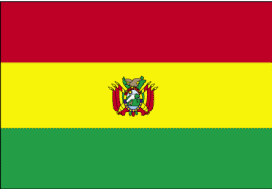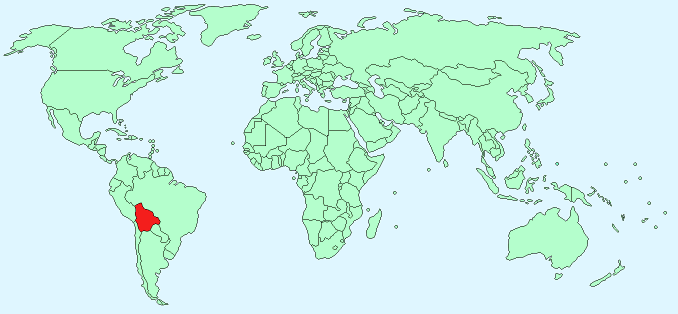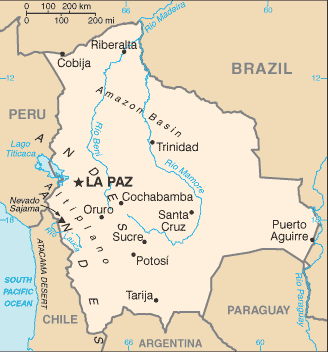Bolivia


Continent – South America
Region – Not applicable
Size – 1,098,580 km²
Geography – Mountainous to the west, flat plains in the Amazon basin
Language – Spanish, Quechua, Aymara
Religion – 95% Roman Catholic, 5% Protestant
Monetary Unit – Boliviano
Natural Resources – tin, natural gas, petroleum, zinc, tungsten, antimony, silver, iron, lead, gold, timber
Agriculture – soybeans, coffee, coca, cotton, corn, sugarcane, rice, potatoes; timber
Industry – mining, smelting, petroleum, food and beverages, tobacco, handicrafts, clothing

Neighbouring Countries – Brazil, Paraguay, Argentina, Chile, Peru
Population – 10,631,486 (2014)
Population Growth Rate – 1.42%
Average Life Expectancy – 66.2
Capital City – La Paz (population 877,363)
Most Populated City – Santa Cruz de la Sierra (population 1,453,549)
Highest Mountain – Nevado Sajama (6,542 m)
Longest River – Manmore
Climate – Warm winters 12°C to 27°C and hot summers 19°C to 30°C on flat plains, cold winters and cool summers in mountains 1°C to 19°C
Yearly Rainfall – 90cm on plains, 55 cm in mountains
Plant Life – ranges from alpine plants in mountains to tropical plants of the rainforest including ichu grass, totora reed, tola, yaretta, potato, quina tree, Para (rubber) tree, vanilla, sarsaparilla, saffron, palms, sweet potatoes, manioc, peanuts
Animal Life – llama, alpaca, guanaco, guinea pig, puma, coati, tapir, armadillo, sloth, peccary, capiguara (river hog), ant bear, monkeys
Harvard Reference for this page:
Heather Y Wheeler. (2015). Bolivia. Available: https://www.naturalhistoryonthenet.com/Facts_Figures/Country_Facts/bolivia.htm. Last accessed Monday, July 18, 2016
Facts and Figures Pages
